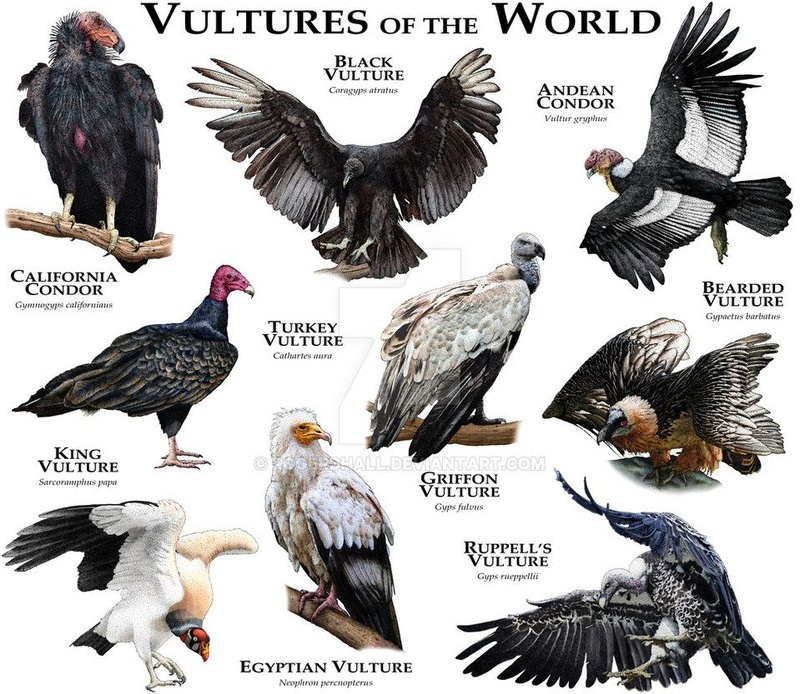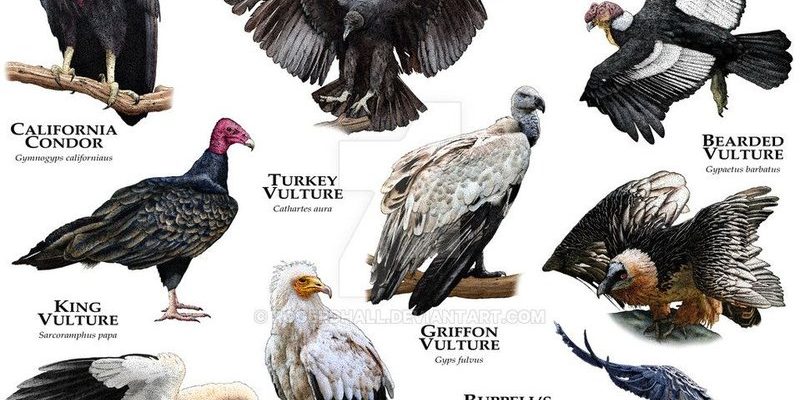
Think of the Bearded Vulture as the unique cousin in a family of birds. While they all share some common traits—like being scavengers and having a keen eyesight—each has its own flair and personality. Understanding these differences can not only help birdwatchers identify them in the wild but also deepen our appreciation for the diversity found in nature.
So grab your binoculars and let’s get started! We’ll break down the key differences between the Bearded Vulture and its relatives, making it easy to spot them next time you’re out exploring.
What is a Bearded Vulture?
The Bearded Vulture (Gypaetus barbatus), also known as the Lammergeier, is a striking bird of prey known for its distinct appearance and unique feeding habits. With a wingspan reaching up to 9.5 feet, it’s one of the largest vultures in the world. This bird’s most notable feature is its long, feathered “beard” beneath its beak, giving it a rugged, majestic look.
Bearded Vultures are often found in mountainous regions across Europe, Africa, and Asia. Their diet is primarily made up of bone, which is quite unusual for vultures. They are known to drop bones from great heights onto rocks to break them open and access the nutritious marrow inside. This unconventional eating habit sets them apart from other scavengers in their habitat.
Their plumage is another standout trait. They have a striking color pattern—dark brown with a reddish hue, which they often enhance by bathing in iron-rich mud. This not only helps them blend in with their rocky surroundings but also serves a purpose in terms of health and protection.
Physical Differences from Similar Species
When comparing the Bearded Vulture to similar bird species such as the Griffon Vulture and the Egyptian Vulture, physical traits can show dramatic differences.
One of the first things you might notice is the size. While Griffon Vultures are large, the Bearded Vulture is bigger in terms of wingspan. Additionally, the Bearded Vulture has a more robust and heavier beak, designed specifically for crushing bones. The coloration is another easy identifier; the Bearded Vulture’s reddish-brown feathers contrast sharply with the lighter, more muted tones of the Griffon Vulture, which has a pale body with darker wings.
Another significant visual marker is the beard. The Bearded Vulture’s distinctive “beard” gives it a tough, weathered look that differentiates it from its relatives. Meanwhile, the Egyptian Vulture has a more delicate appearance and is notably smaller, with a distinctive yellow face.
- Bearded Vulture: Large wingspan, heavy beak, reddish-brown coloration, distinct beard.
- Griffon Vulture: Lighter plumage, slightly smaller wingspan, less robust beak.
- Egyptian Vulture: Small size, pale-yellow facial skin, no beard.
Feeding Habits and Diet Comparison
Feeding habits can often be the most telling difference between bird species. The Bearded Vulture has a pretty remarkable diet that revolves around bones. Yes, you read that right! They primarily eat bone, which is quite rare for vultures. Their unique approach involves dropping bones from high altitudes to shatter them before feasting on the marrow inside.
In contrast, the Griffon Vulture has a more traditional scavenging diet. This bird typically feeds on carrion—decaying flesh of dead animals. While it does have a powerful beak, its structure is suited for tearing meat rather than crushing solid bones.
The Egyptian Vulture differs even more in its dietary choices. This smaller vulture is known for eating a broad range of foods, including insects, small mammals, and even human refuse. It has a surprisingly varied diet compared to the other two species.
This leads us to an interesting question: how do these feeding habits affect their ecosystems? The Bearded Vulture plays a crucial role in breaking down bones and returning essential nutrients to the soil, while the Griffon and Egyptian Vultures both help remove carrion, preventing disease spread.
Habitat Preferences and Nesting
Habitat is another area where differences emerge. Bearded Vultures prefer mountainous regions, often nesting on cliff ledges. They need high altitudes for their flying and feeding techniques. Their nests are often built from sticks and are often reused year after year.
Meanwhile, Griffon Vultures are also found in mountainous areas but can adapt to various landscapes, from grasslands to rocky terrains. Their nests tend to be bigger and more complex than those of the Bearded Vulture.
On the other hand, the Egyptian Vulture is more flexible with its habitat choices. You might find them in semi-arid regions or even closer to human settlements. Their nests are often found in old buildings or trees, showcasing their adaptability.
This preference for different habitats not only highlights their differences but also ensures that they occupy distinct ecological niches.
Behavioral Traits and Social Structures
Let’s talk about behavior. Bearded Vultures are generally more solitary than their relatives. They can often be seen alone or in pairs, especially during nesting seasons. Their solitary nature allows them to be stealthy hunters of bones, which could be harder to spot when in larger groups.
In contrast, Griffon Vultures are highly social birds. They often feed and nest in large colonies, which helps them protect each other from potential predators. Their social structure is fascinating to observe, as they communicate within their groups through various vocalizations and body language.
The Egyptian Vulture has a unique social dynamic, too. While they can be seen alone, they are also known to engage with other birds when feeding, displaying a more opportunistic approach.
Understanding these behavioral traits adds another layer of depth to how we appreciate these magnificent birds. It also reinforces the idea that each species plays a vital role in their ecosystem.
Conservation Status and Threats
Lastly, let’s touch on conservation. The Bearded Vulture is classified as Near Threatened due to habitat loss, poisoning, and hunting. Organizations are actively working to protect these remarkable birds, recognizing their role in the ecosystem.
Griffon Vultures also face threats, particularly from poisoning and habitat destruction, but their population is more stable than that of the Bearded Vulture. Conservation efforts for Griffon Vultures include habitat protection and legal safeguards.
The Egyptian Vulture, while slightly more adaptable, still faces significant threats from habitat fragmentation and poisoning. The species is classified as Endangered in some regions, prompting conservationists to take action.
Understanding these threats is crucial. It helps us advocate for policies that protect their habitats and ensures future generations can enjoy the sight of these incredible birds soaring through the skies.
Wrapping Up: Why Understanding These Differences Matters
Recognizing the differences between the Bearded Vulture and similar species, like the Griffon and Egyptian Vultures, is not just about identifying birds in the wild. It’s about appreciating the intricate web of life that exists in our ecosystems. Each bird has unique traits that enable it to thrive in its environment, and understanding these differences helps us advocate for their conservation.
Next time you encounter a vulture soaring overhead or perched on a rock, take a moment to appreciate what makes it unique. Whether it’s the Bearded Vulture’s bone-crushing feeding habits or the social dynamics of the Griffon Vulture, each is a testament to the wonders of nature. So, keep exploring and watching—there’s always more to discover about our feathered friends!

